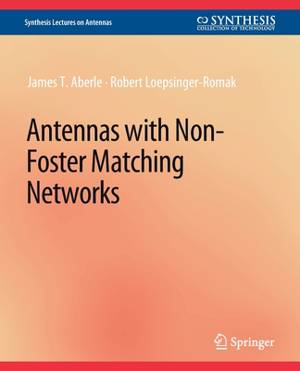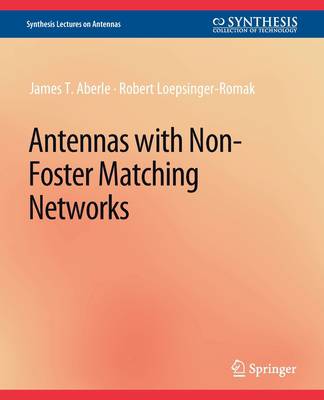
- Afhalen na 1 uur in een winkel met voorraad
- Gratis thuislevering in België vanaf € 30
- Ruim aanbod met 7 miljoen producten
- Afhalen na 1 uur in een winkel met voorraad
- Gratis thuislevering in België vanaf € 30
- Ruim aanbod met 7 miljoen producten
Zoeken
€ 29,95
+ 59 punten
Omschrijving
Most antenna engineers are likely to believe that antennas are one technology that is more or less impervious to the rapidly advancing semiconductor industry. However, as demonstrated in this lecture, there is a way to incorporate active components into an antenna and transform it into a new kind of radiating structure that can take advantage of the latest advances in analog circuit design. The approach for making this transformation is to make use of non-Foster circuit elements in the matching network of the antenna. By doing so, we are no longer constrained by the laws of physics that apply to passive antennas. However, we must now design and construct very touchy active circuits. This new antenna technology is now in its infancy. The contributions of this lecture are (1) to summarize the current state-of-the-art in this subject, and (2) to introduce some new theoretical and practical tools for helping us to continue the advancement of this technology.
Specificaties
Betrokkenen
- Auteur(s):
- Uitgeverij:
Inhoud
- Aantal bladzijden:
- 47
- Taal:
- Engels
- Reeks:
Eigenschappen
- Productcode (EAN):
- 9783031004049
- Verschijningsdatum:
- 31/12/2007
- Uitvoering:
- Paperback
- Formaat:
- Trade paperback (VS)
- Afmetingen:
- 190 mm x 235 mm
- Gewicht:
- 113 g

Alleen bij Standaard Boekhandel
+ 59 punten op je klantenkaart van Standaard Boekhandel
Beoordelingen
We publiceren alleen reviews die voldoen aan de voorwaarden voor reviews. Bekijk onze voorwaarden voor reviews.











